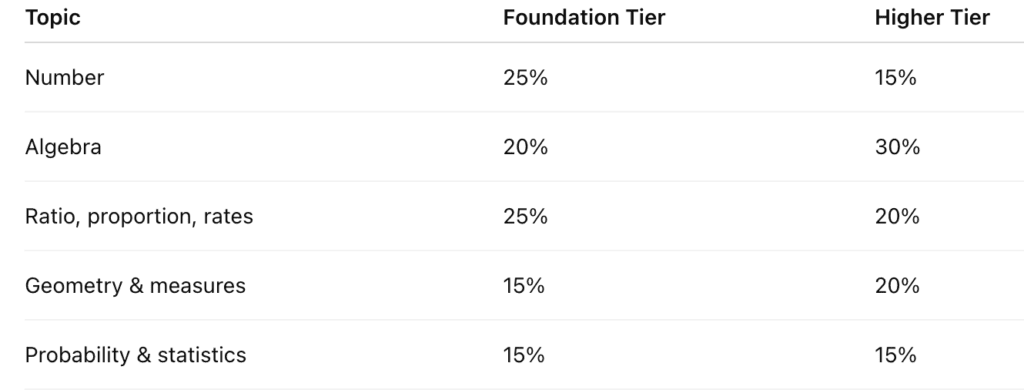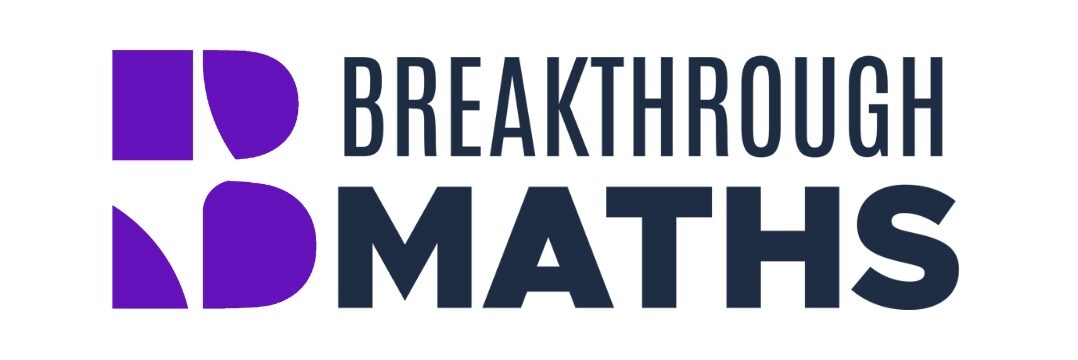The Difference Between Foundation and Higher Level GCSE Maths
There are two options when it comes to GCSE Maths: Foundation Tier and Higher Tier. It’s not just about picking an easier or harder option, each opens different doors and comes with its own trade-offs. Here’s everything you need to know about each tier, broken down clearly.
The Grade Ranges and What You Can Actually Get
The biggest difference by far are the grades that you can achieve in your GCSE’s.
The GCSE Foundation Tier is a ‘safer’ route if you want to secure a pass. You can only earn grades 1 through 5. So even if you smash every question, 6 and up are off the table. That means if you need a 7 for, say, A-level maths, foundation won’t get you there. While it may be more straightforward, but there are some drawbacks.
The GCSE Higher Tier gives you the opportunity to score the higher grades of 4 through 9. Nail your exam and, in theory, you could grab that top grade 9 everyone thinks is impossible to get. On the flip side, score below a 4 and it’s a U. Ungraded. Which is everyone students worst nightmare.
In short, Foundation is all about securing a solid pass (up to a 5). Higher gives you range for excellent grades, but comes with a much greater risk for you.
Exam Content and Style
In terms of content, Foundation keeps things grounded. There’s more focus on number, basic algebra, geometry, simple statistics. This is a much safer territory as most students don’t struggle with these and they’re easy to learn/revise.
The Higher content adds more complex topics like advanced algebra, circle theorems, and vectors. Topics that are harder to wrap your head around and often intimidating to even attempt. There’s a much stronger emphasis on algebra, with less weight on number.
Here’s a breakdown of how often each topic crops up across each tier:

Pros and Cons of Foundation Tier:
One of the reasons that makes it difficult to decide which tier you should choose is the fact that there are pros and cons of each. It’s not as simple to decide between ‘hard or easy’.
In GCSE Foundation Tier, there’s a clear pass range (1–5). This is great if you’re aiming solidly for 4 or 5. It involves less stress, simpler questions, and fewer curveballs that will confuse you in the exam. It also builds confidence, which is especially useful if maths isn’t your favourite subject. For example, if you’re getting constant grade 5’s in your class tests then you’ll feel ready to take on the GCSE exam.
However, the maximum grade is a 5. There’s a very slim possibility for you to enter STEM A-levels or courses that ask for a grade 7. You also miss out on deeper content that could come up next year in A-levels. If you choose to do Foundation, then you could struggle a lot when you get to the A-levels.
Pros and Cons of Higher Tier:
In GCSE Higher tier, you’re open to all grades, including high ones. This is perfect if you’re aiming for STEM, A-levels or uni-level maths. It also covers richer, more interesting maths content and this can be more fun if you like a challenge. Although that is a rare feeling for most students.
The cons are that there is a wider gap in performance. In other words, it is easy to lose ground if you lean too much into tricky topics without nailing the fundamentals. For example, you can’t move on to the harder topics if you can’t nail the easy ones. However, it’s hard to say how long it could take each student to master the basics so you could have a short amount of time to catch up. And, as mentioned above, the threat of a grade U looms if you do poorly.
How Schools Decide Your Tier
Usually, your school calls the shots. Teachers look at your classwork, mock scores, and general confidence in lessons to decide which tier fits. Some students may disagree with their decision, but it’s usually hard to argue with their decision (especially if exam scores reflect poor performance). If you’re home-schooled or studying independently, you obviously get more say. In that case, you should think carefully about your long-term goals, mindset, and how much you enjoy the idea of pushing yourself.
The Overlap Between Grade 4 & 5
Here’s a nuance students sometimes miss: grades 4 and 5 overlap between both tiers. That means you could hit that grade 5 on a higher paper, even though it also sits at the top of foundation. It’s how the exam boards keep things fair. If you’re in that middle zone, schools sometimes give a “safety net” so you can still pass on foundation if you’re close to a 4.
What To Consider
Choose Foundation if:
1) You’re targeting a secure pass (up to 5).
2) Maths isn’t your strongest suit and you want confidence-building territory.
3) Your longer-term studies don’t hinge on a high maths grade.
Choose Higher if:
1) You’re aiming for STEM or A-level courses that demand a 6 or 7.
2) You enjoy maths and are ready to stretch into richer content.
3) You feel confident about fundamentals and want to keep options open.
Putting It All Together
GCSE Maths isn’t a simple “easy vs hard” split. It’s about what fits where you’re aiming and where you are now. Here’s why this matters:
Future path matters: Want STEM A-levels, high-level jobs, or maths-heavy courses? Higher gives you room to grow. Foundation locks you safely in—but caps you there.
Confidence counts: If foundation helps you perform steadily, that’s better than higher where stress and weak fundamentals could drag you down.
Overlap is your friend: You can still earn a 4 or 5 either way, and foundation papers include enough common questions so you’re not completely isolated by choice.
Final Thoughts
Alright, that’s the low-down: Foundation = safer ground. Higher = wider horizons, more risk. Neither’s is better. Just one might suit you better, depending on your goals, confidence, and how much mental energy you’re ready to bring.
If you’re struggling with GCSE Maths, you can sign up to our online maths classes here.



